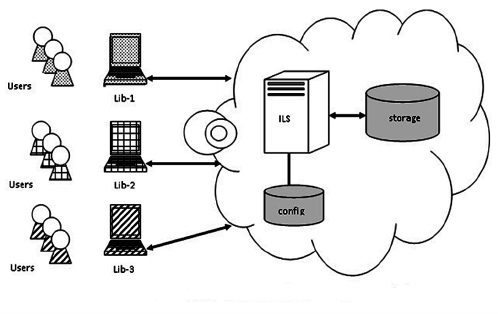What Is Sinkom? Definition and Core Idea
To define sinkom: it is a term that merges synchronization, communication, and modularity into a unified mental model or framework.
Most interpretations treat sinkom as a blueprint for connecting systems, modules, agents, or people so they act in harmony. It describes a system in which discrete parts communicate and sync, while remaining decoupled enough to be replaced or extended.
In technology, sinkom means designing software or infrastructure so that subcomponents exchange data in real time, stay consistent, yet remain modular. In social or behavioral contexts, sinkom can apply to teams, communities, or workflows.
Etymology and Conceptual Roots
To trace origin: the word “sinkom” appears to derive from combining “sync” (synchronization) and “com” (communication), with implicit modularity.
To locate in theory: this concept relates to established ideas such as service-oriented architecture (SOA), microservices, event-driven systems, and distributed coordination. Those architectures emphasize decoupling, messages or events, and eventual consistency — which map well into sinkom’s pillars.
To highlight innovation: sinkom is more than a reuse of those patterns. It emphasizes balance among the three pillars, not privileging one over the other. A system with great modularity but poor synchronization fails. A highly synchronized but monolithic system fails. Sinkom demands tradeoffs and holistic design.
Pillars of Sinkom
Below is an explanation of each pillar and how it functions.
| Pillar | Purpose | Key Traits |
|---|---|---|
| Synchronization | Ensure consistency across modules | Data replication, consensus protocols, time alignment |
| Communication | Exchange information among modules | Message buses, event streams, APIs |
| Modularity | Decouple parts so they can evolve independently | Plugin architecture, microservices, interface boundaries |
Synchronization
To coordinate actions: modules maintain coherent states. Changes in one module propagate so others update or adapt.
To implement: one might use distributed caches (e.g. Redis), state sync protocols (e.g. CRDTs, Raft), or time-based triggers.
To caution: too tight synchronization risks bottlenecks or coupling; too loose leads to divergence.
Communication
To transmit context: modules send messages or events about changes, commands, or queries.
To enable: use message queues (RabbitMQ, Kafka), APIs (REST, GraphQL), or websockets for real-time updates.
To optimize: format messages compactly, version interfaces, detect failures, and retry.
Modularity
To isolate complexity: partition system into independent pieces. Each piece has clear interface and responsibility.
To support: plugin frameworks, microservices, or module registries help.
To benefit: you can upgrade, replace, or scale individual modules without disruption.
Application Domains of Sinkom
Sinkom’s flexibility allows it to appear in many fields. Below are key domains:
-
Software & Platforms
Use sinkom to design enterprise systems, SaaS, or mobile backends. For example, each service handles a domain (e.g. payments, notifications) and they sync via events. -
Smart Infrastructure / IoT
In smart homes or factories, sensors, actuators, and controllers connect via sinkom: modules sending data, coordinating actions, updating state. -
Team Collaboration & Workflows
Apply sinkom among people: tasks, notifications, shared status boards behave like modules: update one, others reflect the change, communication channels propagate context. -
Event Management & Live Systems
During conferences or live events, sinkom underlies scheduling modules, streaming modules, registration modules, and syncs across them. -
Community & Social Interaction
In digital communities, sinkom describes how participants synchronize attention (live chat), communicate signals (emojis, status), and modularize subgroups (channels, roles).
Design Patterns & Strategies in Sinkom Systems
To build effective sinkom systems, these patterns help:
-
Event Sourcing + CQRS: Write every change as an event; read via derived projections. Ensures synchronization and history.
-
Publish–Subscribe (Pub/Sub): Modules publish changes; interested modules subscribe — decouples communication.
-
Circuit Breakers & Retry Logic: Prevent failure cascades when modules fail.
-
Versioned Interfaces: Rolling upgrades by supporting v1, v2 of APIs to maintain compatibility.
-
State Reconciliation / Conflict Resolution: Use CRDTs or merge logic to reconcile divergent states.
Benefits & Challenges of Sinkom
Benefits
-
Enhanced scalability: modules scale independently.
-
Increased resilience: module failure doesn’t collapse whole system.
-
Better evolvability: you can iterate parts without full rebuild.
-
Real-time cohesion: system feels synchronized and responsive.
-
Clear separation of concerns.
Challenges
-
Complexity in distributed coordination.
-
Latency and consistency tradeoffs.
-
Overhead of messaging infrastructure.
-
Debugging across module boundaries.
-
Version management when interfaces evolve.
Example: Sinkom in Action (Hypothetical)
Suppose a platform “SinkomFlow” handles content publishing. It splits into modules:
-
Editor: content creation.
-
Storage: media assets.
-
Notification: sends alerts.
-
Analytics: tracks metrics.
-
User Profile: accounts, settings.
When editor publishes an article:
-
Editor module emits an ArticlePublished event.
-
Storage module stores images.
-
Notification module sends to subscribers.
-
Analytics module logs views.
-
Profile module updates author activity.
They all sync via a message bus, communicate only via events, and remain modular. Upgrading or replacing Analytics won’t break the rest.
SEO & Branding: Using Sinkom as Term / Product
If you adopt “sinkom” as a brand, platform, or term, consider:
-
Attach descriptors (“sinkom platform”, “sinkom framework”, “sinkom system”) to clarify meaning.
-
Create pillar content that defines sinkom, its benefits, use-cases.
-
Use case studies to show real implementations.
-
Build semantic clusters: sinkom + modularity, sinkom + distributed systems, sinkom + real-time, etc.
-
Use internal linking: connect pages about synchronization, communication, etc.
-
Keep the term consistent (lowercase, uppercase) once chosen.
Sinkom vs Related Architecture Styles
| Feature | Sinkom | Monolithic | Microservices (without sinkom) |
|---|---|---|---|
| Separation | Strong modular separation + sync + comm | No separation; one block | Separation, but communication may be ad hoc |
| Synchronization | Core focus | Implicit state in single process | Sync via APIs or data stores |
| Communication | Event-driven, real-time | Direct method calls | API calls, RPCs |
| Upgradability | High | Low | Medium (if interfaces stable) |
| Failure containment | Good | Poor (one crash breaks all) | Good, if dependencies managed |
Unique FAQs About Sinkom
Q1: Is sinkom a software library or just a concept?
Sinkom is primarily a concept or architectural philosophy. Yet, people can build libraries or frameworks that realize sinkom principles.
Q2: Can sinkom apply in non-technical fields?
Yes. Teams, organizations, and workflows can follow sinkom: modular units (teams), synchronized status, communication patterns.
Q3: How does sinkom differ from microservices?
Microservices break an app into services. Sinkom adds the emphasis that those services must synchronize and communicate in a structured way, not just loosely call each other.
Q4: Does sinkom require eventual consistency?
Often yes. Strict consistency is expensive; sinkom systems commonly accept eventual consistency with reconciliation.
Q5: What are real-life signs a system uses sinkom principles?
Systems use message queues, event logging, modular plugin subsystems, real-time sync, and decoupled services.
Q6: How to test a sinkom system?
Use integration tests across modules, inject faults to observe isolation, simulate message delays, test version compatibility.
Q7: Can sinkom be retrofitted into legacy systems?
Yes, gradually: wrap legacy into modules, introduce messaging layers, slowly extract subsystems.
Roadmap: How to Adopt Sinkom
-
Audit your system: find monolithic or tightly coupled parts.
-
Define modules: group responsibilities into bounded contexts.
-
Introduce a message/event bus: central or distributed event infrastructure.
-
Refactor incrementally: extract one module at a time.
-
Add synchronization logic: ensure consistency across modules.
-
Version interfaces and test: allow backward compatibility.
-
Monitor, iterate, adjust.
Future Trends & The Evolution of Sinkom
-
AI-assisted modules: modules that learn behavior and sync automatically.
-
Edge sinkom: modules at edge (IoT devices) communicating to core.
-
Blockchain & sinkom: decentralized modules sync via consensus.
-
Adaptive sync strategies: modules adjust synchronization frequency dynamically.
-
Domain-specific sinkom frameworks: for healthcare, finance, logistics.
Learn More: Novafork: The Complete Guide to Architecture, Features, and Applications
Eolaneday: Origins, Traditions, and Modern Significance
Conclusion
Sinkom describes a powerful architecture paradigm combining synchronization, communication, and modularity. It offers a guiding principle for building systems, teams, and workflows that act cohesively yet flexibly. Its value appears in software, devices, workflows, communities, and processes. To leverage sinkom, one must plan for messaging layers, module interfaces, sync logic, and versioning. Adoption yields scalable, maintainable, real-time systems. Sinkom is not just a buzzword — it is a design philosophy ready for modern challenges.







